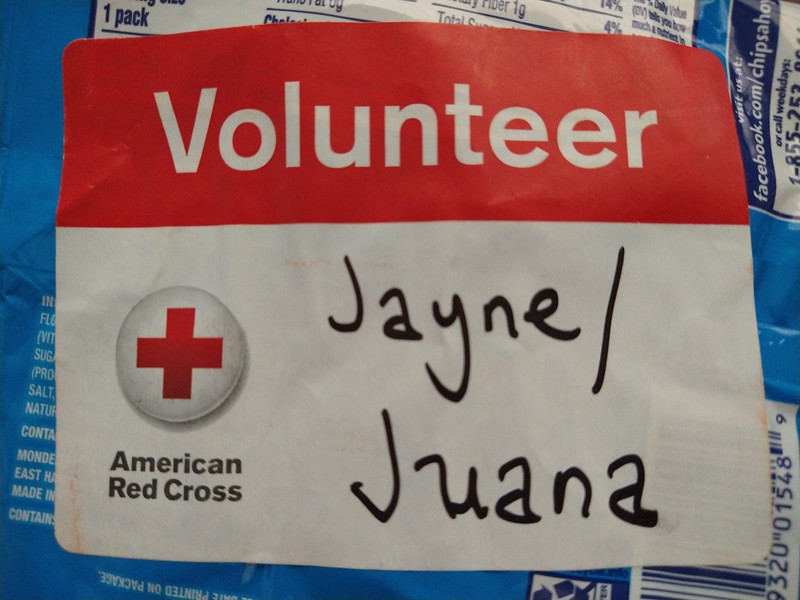One of the things that differentiates me from other consultants and trainers regarding volunteer engagement is that I don’t just read and research and present: I also manage volunteers and I regularly volunteer myself. So much of my training advice, web pages and blogs have come from these first-hand volunteering experiences.
Every volunteer has a different “want” out of a volunteering gig, to make it worthwhile for them. For me, as a volunteer, it’s that:
- I’m on-boarded quickly.
- My time when I’m in training or actually volunteering is respected / isn’t wasted.
- I feel like I’m actually doing something worthwhile as a volunteer for those served by the organization or the “cause” (I don’t do the work and wonder why it matters).
- I feel supported in the volunteer role, I’ve been giving the prep I need for the role (I don’t feel like I’m foundering/set up for failure).
- I feel like everyone wants everyone else to succeed, people don’t try to play “gotcha” with each other, there are not any ugly hidden agendas going on, there’s no delight in someone making a mistake, etc.
If I get even more out of it – if I have fun, if I get skills I can use in my job, etc. – that’s great too, but those four points are what are essential for me. And rarely do I undertake a volunteering gig that hits all those four points.
Helping at a blood drive in August hit all four of those points.
I’ve been promoting Red Cross volunteering for people who want to get started volunteering for many years – but I decided it was overdue for me to give it a try myself. So I went to the web site, read up on opportunities, and signed up for a few roles I thought I had time for and that looked interesting to me. None of the online volunteering I was interested in is available right now (they have enough volunteers for those tasks), but they really need people to help at blood drive events, and my commitment would be just one shift a month, so I signed up.
Filling out the initial application took a while – the Red Cross requires a lot of information in the volunteer application. But I think that’s a good thing: it screens out people who can’t make a commitment to reading information, filling out a form correctly, etc. – something any volunteer with the Red Cross will need to do in any assignment.
Then I did a phone interview with a volunteer that’s in charge of screening, then watched a video on YouTube, and then went through a live online training with a veteran “blood donor ambassador” – the name for volunteers who help sign in people at blood drives, make sure they get snacks and a rest afterward, etc. And all of that time is logged on my account already as volunteering time – I didn’t have to do anything.
We are a one-car family, and that means, most of the time, I do not have access to a car. I was able to sign up to help at a blood drive a short, direct bus ride from my home, in a nearby town. I had signed up for my first gig within minutes of my interview, and it was just two weeks away from that date.
I showed up at the event, 30 minutes early (as the video explained), and it turned out that I was the only volunteer ambassador there – meaning I was checking everyone in. I was very nervous since I thought I would get to “shadow” someone. Instead, it was all me – the site manager showed me how to check donors in, and the first donors, all veteran blood donors, also helped me (I think they loved being the experts to guide the newbie). And for the rest of the day, that’s what I did: donors showed their ID, I scanned it with a scanner, I checked off their name, I gave them a nametag, they had a seat and then got called up for the donation.
It was easy, it was interesting (nice to chat with people, interesting to watch how they go through the different stations of donating), and there was about 30 minutes when no one was scheduled and I was able to eat the lunch I brought.
If you are squeamish, don’t worry – you don’t ever have to see any blood, since you are facing away from the donor tables. And if anyone were to throw up, it’s NOT your job to clean it up (no one threw up, BTW, but we did have one guy faint).
If another volunteer had shown up, one of us would have been at the registration table and one of us would have been at the snack table, chatting with people who had just given blood, to make sure they were okay and ready to leave after 10 minutes or so. Had it been a larger event, there would have been two people registering and two people at the snack table.
If you are looking for an easy, interesting volunteering gig, I highly recommend you sign up to be a blood donor ambassador. You get to pick which event(s) you help at. It gives you insight into how the Red Cross works (the Red Cross does a lot more than blood drives). And you can sign up for as many blood drives as you want – if there is one every day in your area (which there is in the Portland, Oregon area), you could easily get 25 hours, maybe even more, of volunteering in a week, if you can volunteer on weekdays (more if you can do weekends too). I highly recommend this for people that are required to do community service – you may have three weeks from the time of sign up until you start, but you can get hours in quickly if you have time during the day.
In addition to Blood Donor Ambassadors, the American Red Cross needs:
- Blood Transportation Specialists
- Disaster Action Team members
- Shelter Services staff members (being a blood donor ambassador is a good way to see what the intake process is like for emergency shelters)
- Disaster Health Services Team (if you are a licensed healthcare provider)
- Administrative help
If you dream of being deployed to disaster zones elsewhere, you first have to have deep experience as a part of your own local Red Cross in your own area (disaster action teams, shelter staff teams especially).
And if you are with an initiative that’s struggling to attract volunteers – what is the Red Cross doing that YOU should be doing regarding volunteer management? Note that I didn’t deal with any paid staff as I went through the onboarding process – my screeners and trainers were volunteers themselves!
Also see:
- How to map what your volunteer in-take and volunteer placement process should look like.
- The Information About & For Volunteers You Should Have on Your Web Site.
- Me as a volunteer? More frustrated than ever.
- Still trying to volunteer, still frustrated.
- How do I get to you without a car?
- How to get rid of volunteers
UPDATE:
A few months ago, I decided to test my own advice that I have posted on the subreddit regarding volunteering many times, that if you volunteer locally with the American Red Cross, you might get asked to deploy to a disaster somewhere else in the USA.
Welp – that’s exactly what’s just happened: I just got an email sent to all volunteers:
As Hurricane Ian hit Florida with dangerous winds, rain and storm surges, Cascades Region is in alert and standby modes in preparation of volunteer deployments. As we monitor the situation we look to current Red Crossers to train in both deployable and local volunteer roles to continue supporting the mission and our impacted communities.
And there’s a link to something called the Deployment Interest Form, and more info about information events (2 virtual, 3 in-person) to share deployment processes and training.
Folks, it really, really does work: volunteer LOCALLY with your American Red Cross chapter, in any capacity, and you will get info on trainings for disaster response, and if you complete that training, you may get invited to deploy to a disaster zone to help.
And in the USA, you start by filling out this form.
https://www.redcross.org/volunteer/become-a-volunteer.html
The crisis in Florida and the East Coast caused by this latest hurricane will go on for MONTHS. You could be a part of the response! Fill out the form, get the training you need – ASAP.




 So often – TOO OFTEN – I hear nonprofits, government initiatives, NGOs, charities and other mission-based programs complaining that they aren’t getting good attendance at their events or program activities, or aren’t getting any press coverage, or don’t have enough volunteers, and so they are looking for something innovative and new in marketing.
So often – TOO OFTEN – I hear nonprofits, government initiatives, NGOs, charities and other mission-based programs complaining that they aren’t getting good attendance at their events or program activities, or aren’t getting any press coverage, or don’t have enough volunteers, and so they are looking for something innovative and new in marketing.



